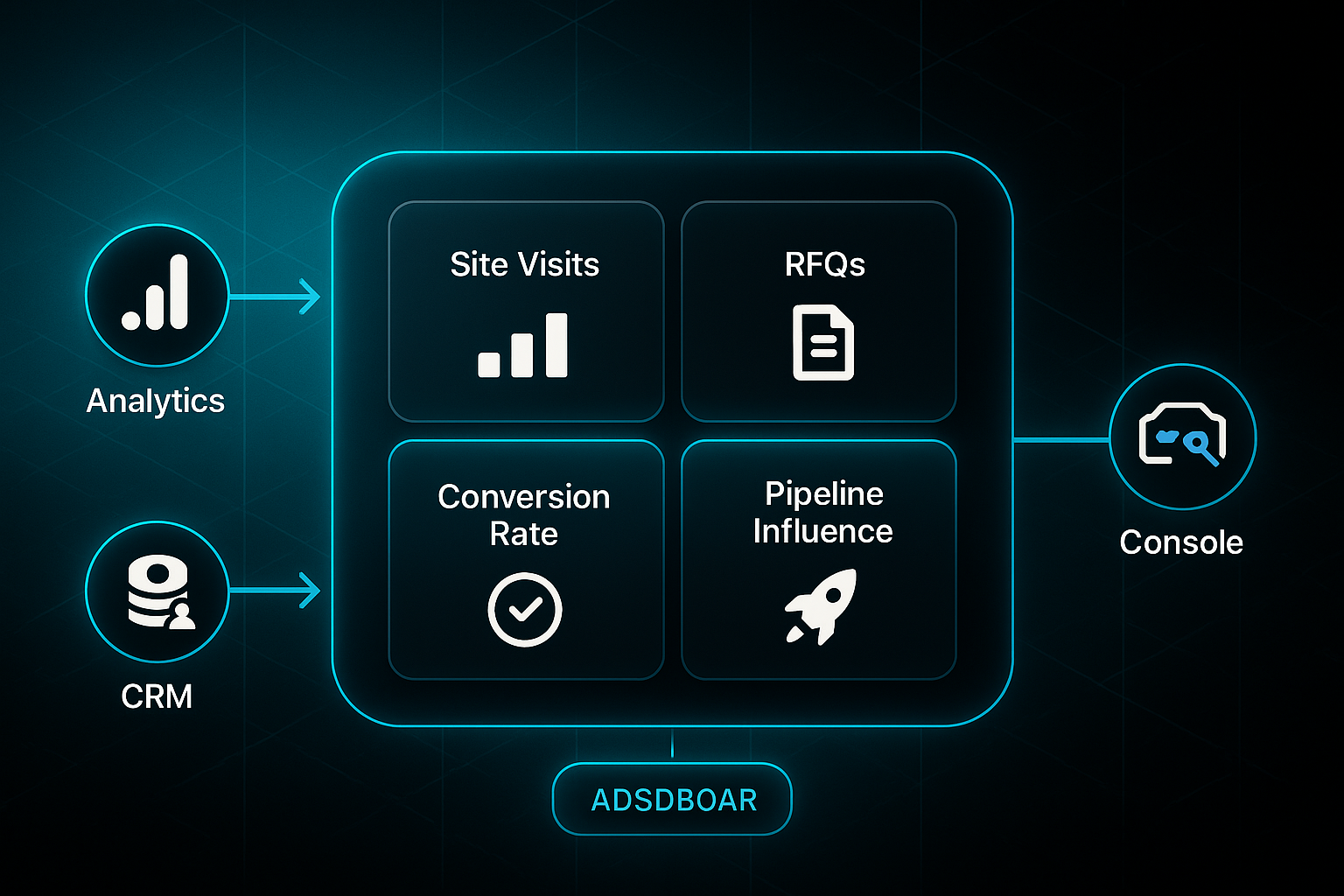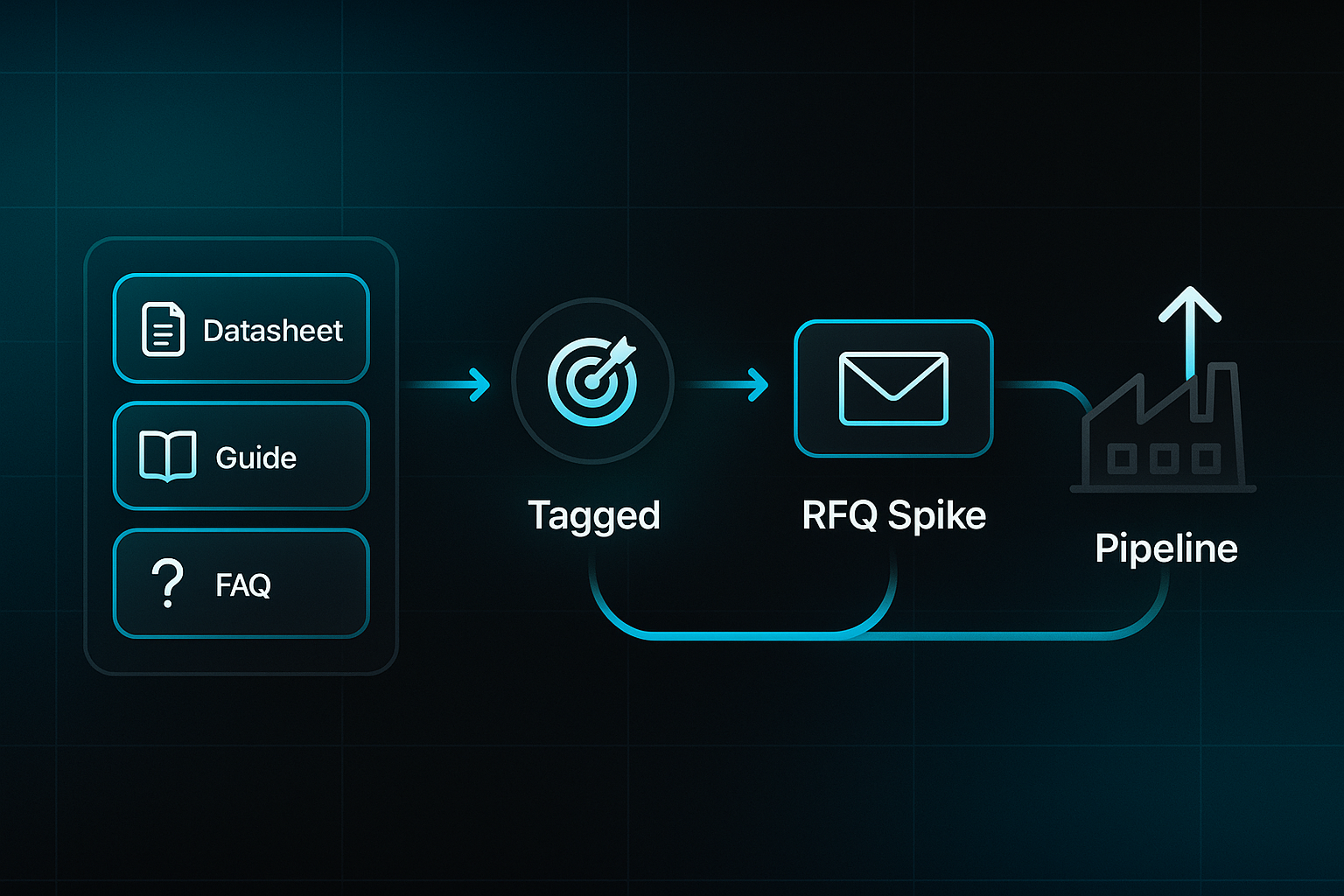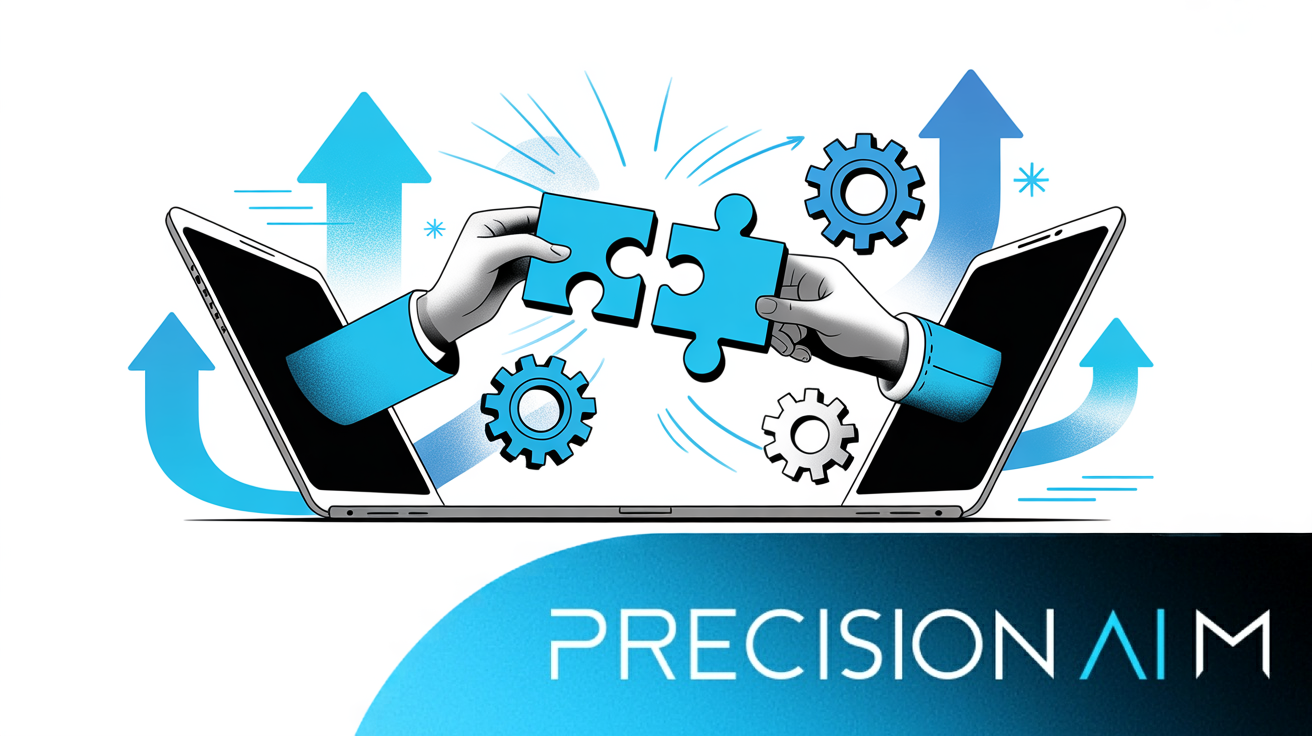Manufacturers face a unique challenge: reaching technical buyers who demand precise information, not just flashy marketing. In my experience, generic SEO tactics rarely move the needle for this audience.
If you’ve struggled to attract qualified leads or prove ROI from your website, you’re not alone. Manufacturing SEO requires a different playbook—one built around technical content, robust site architecture, and measurable business outcomes.
In this guide, I’ll break down what sets manufacturing SEO apart from retail, show you how to structure your site for engineers and procurement teams, and share proven keyword strategies using tools like SEMrush and Ahrefs. You’ll see real-world case studies, learn how to track results, and get practical troubleshooting tips for common pitfalls.
By the end, you’ll have a clear, actionable framework to drive more RFQs, demo requests, and pipeline growth—without wasting time on vanity metrics. Let’s get practical about turning search visibility into real business wins.
What is Manufacturing SEO and Why Does It Matter?
Clarifying the Meaning of Manufacturing SEO
Let’s get right to the heart of it. Manufacturing SEO goes beyond the basics of search engine optimisation—this is about helping manufacturers reach technical decision-makers with precise, relevant information at every stage of a B2B buying cycle.
Now, unlike B2C approaches, you’re not targeting general keywords or lifestyle searches. Instead, the people searching are engineers and procurement teams, looking for part numbers, industry certifications (think ISO 9001), and application specifics. Their process? Often lengthy, with research stretching over weeks as multiple people weigh in on big decisions.

Here’s the thing: technical buyers don’t just want generic sales talk. They want datasheets, compliance proof, and clear case studies—real substance that helps them validate their shortlist.
And the efforts pay off. In 2024, 68% of manufacturers increased their SEO budgets, and those taking a structured approach saw a 37% increase in industrial leads within a year.
By implementing a smart, SEO-optimized website, one motion control company was able to open new global markets, expand its high-margin custom solutions business, and ultimately double its sales.
Laying a strong SEO foundation, running technical audits, researching competitors, and reviewing core content usually takes two to four weeks.
Site Architecture and Content Essentials
Manufacturing websites aren’t simple landing pages; they’re often sprawling, multi-layered catalogues, segmented by specification, application, or industry.
The top performers go past the basics. Their sites feature resource hubs filled with detailed datasheets, compliance certificates, and practical guides. Siemens, for example, sorts resources by application and technical criteria, guiding engineers directly to what they need.

Midway Manufacturing adjusted their content to be richer in technical details—including downloadable PDFs—and saw qualified enquiries double after six months.
Mapping out architecture and content needs usually takes two to six weeks, longer for complex or legacy sites.
Key Differences from Retail Ecommerce SEO
But what actually makes manufacturing SEO so different from the retail game? It’s not just the products—it’s the journey.
Retail SEO is built for fast, emotional buying decisions—discounts, reviews, quick checkouts. In manufacturing, there’s typically a marathon research phase involving several stakeholders and a need for granular detail.
Here’s how it really stacks up:
| Attribute | Manufacturing SEO (B2B) | Retail/Ecommerce SEO (B2C) |
|---|---|---|
| Content Types | White papers, datasheets, case studies | Reviews, product listings, promos |
| Buyer Workflow | Search → Research → Validation → RFQ/Sales | Search → Select → Purchase |
| Conversion Events | RFQ forms, demo/contact requests | Add to cart, checkout |
| Timeline for Results | 4–12 weeks post-upgrade | 1–4 weeks after updates |
Update your technical content or site structure, and you can expect to see qualified organic traffic and enquiries climb within one to three months.
Manufacturing SEO Keyword Strategy and Tools
Effective keyword research starts with identifying valuable, industry-specific terms—standards, model numbers, specifications—over about a week.
You’ll want tools like Ahrefs (from $99/month, great for competitor analysis and backlinks) or SEMrush (from $139.95/month, which mixes SEO and PPC tracking).
These help uncover high-intent and long-tail queries fast, typically in under two weeks. Building a keyword-to-content map adds one more week, and you’ll often notice improved rankings four to eight weeks after publishing optimised pages.

Addressing Common Manufacturing SEO Challenges
Every manufacturing site faces obstacles, so how do you tackle the big ones?
- Legacy Platforms
Begin with a technical audit (1 week), then upgrade in stages (2–4 weeks), with swift rollbacks if needed. - Thin or Outdated Content
Interview subject matter experts and draft new content (1 week), then review and expand (1–3 weeks). Expect results in 4–8 weeks. - Local/Industry Visibility
By standardising NAP (Name, Address, Phone), adding schema and backlinks (1–6 weeks), you can gain Map Pack placement in 2–8 weeks. - Slow Lead Velocity
Improve site speed and Core Web Vitals (1–3 weeks), or overhaul navigation/calls to action (2–4 weeks) to increase high-quality leads.
For example, Polymer Solutions International saw a 22% rise in organic traffic with just six weeks’ SEO, an 18% bump in quote requests at week 12, and 126% more paid conversions after six months.

SEO’s Business Impact and Performance Measurement
So, why invest in manufacturing SEO? Because these strategies deliver real, measurable results: more qualified leads, faster pipelines, and lower acquisition costs.
Take Fisher Tank as an example. By measuring site visits and RFQ submissions at four- and twelve-week intervals, they proved SEO’s role in new business generation.
Measuring these gains is straightforward:
- Set up GA4 and Google Search Console
1–2 days - Validate conversion events
1 week - Use dashboard tools like Looker Studio
2–4 days and check KPIs monthly
Tracking these steps ensures your SEO investment translates into real growth.

Resource Allocation and Timelines
Here’s what you should budget for, and when to expect results:
- SEO tools (SEMrush, Ahrefs)
$200–$800/month - Technical audits
$1,000–$5,000 (2–6 weeks) - Content upgrades
$200–$1,500 per page (2–4 weeks) - Consultant/agency support
$1,500–$5,000/month (expect results in 2–6 months)
At its core, manufacturing SEO is about strategy, technical focus, and patience.
With the right plan, most manufacturers will see measurable progress in just 4–12 weeks—and even bigger gains as efforts compound over time.
How to Measure ROI (and Prove Results) from Manufacturing SEO
You’ve poured hours and budget into manufacturing SEO—now the team wants to see the payoff. The big question is, how do you prove those efforts are really turning into new business?
Setting Realistic Benchmarks
For manufacturers, ROI isn’t just about more website visitors. It comes down to quality leads, cost-per-lead (CPL), and the speed at which people request quotes or demos. You’ll want your dashboards to tie organic search directly to RFQs, demo bookings, and eventual new wins.
Effective manufacturing marketing requires a 'cut the scrap' mentality, shifting the focus from vanity metrics like traffic to the tangible ROI generated by high-quality leads entering the sales pipeline.
Let’s talk numbers. In 2023, UK manufacturing firms reported CPL from SEO leads at £85–£210, compared with paid ads that often shot beyond £300. Targeted organic pushes have driven pipeline growth between 23% and 42% for many mid-sized companies.
So, is your SEO ROI where it should be? Let’s get practical.
What Should You Track—and Why?
The most effective approach is wiring up your analytics so you can actually map SEO work to real results. Start with these:
- Leads from Organic
Monitor RFQ submissions, tracked calls, demo forms, and spec downloads in Google Analytics 4 or HubSpot. - Conversion Rate
Find the percentage of organic visitors converting on datasheets, white papers, or other technical content. - Pipeline Influence
See if organic leads are advancing through quote or negotiation stages in your CRM. - CPL and Cost per Opportunity
Divide your SEO spend by the verified leads—ignore “visits” that go nowhere. - Revenue Attribution
Trace closed/won business in Salesforce, Pipedrive, or your ERP, all the way back to search.
Want to know if you’re underperforming? Top manufacturing websites see 2.5%+ organic conversion rates, with roughly half of SEO-driven enquiries proving sales-ready.
Making SEO Performance Easy to See
Here’s where dashboards come to the rescue. You can use Looker Studio to blend views from Google Search Console, Google Analytics, and your CRM—all on one screen. Want to connect phone enquiries to specific keywords? Plug in call tracking with Infinity or ResponseTap.
Pipeline visibility matters, too. Use HubSpot or Salesforce dashboards to trace every organic lead from that first search straight through to a closed deal. If you want even more insight into how technical users actually interact with your site, throw Hotjar or Microsoft Clarity into the mix.
Initial dashboard setup usually takes about a week or two. After that, it’s all visual, and fast to monitor.
Linking Content to Pipeline Growth
Manufacturing SEO is less about chasing big, generic keywords and more about mapping technical content—like datasheets and regulatory guides—directly to tangible business outcomes.
Here’s how you link them: For every downloadable, tech guide, or FAQ, set up conversion actions in your analytics. Every new content piece gets a goal tag. Then, watch for spikes in RFQs after launches.

One UK firm saw a 28% rise in RFQs just three months after tagging and optimising their datasheets. That’s the kind of direct connection you’re after.
Cut the Manual Work: Automate Reporting
Nobody wants to spend hours on spreadsheets. Automate the dull parts by:
- Monthly Reports
Set Looker Studio or HubSpot to send summaries on schedule. - Auto-Tagging
Use Google Tag Manager so new forms or downloads are tracked instantly. - Alerting
Set up email or Slack warnings so you’re notified if leads or traffic drop.
All this can usually be up and running within a week. Then, your focus can shift to improving performance, not compiling endless reports.
Compliance and Risk—Don’t Trip Over the Details
Compliance checks might not be exciting, but in manufacturing, skipping them can cause headaches. Before publishing new landing pages, run through a quick compliance checklist:
- Certifications
Are ISO, CE, or sector marks correct and visible? - Intellectual Property
Double-check that confidential specs or CAD files aren’t exposed. - Export Controls
If products or applications face export limits, make sure details aren’t crawled by search engines.
If you’re unsure, it’s worth letting your compliance team review. A single slip can risk far more than any missed ranking.
Showcasing Results: Bringing Data to the Board
Quarterly reviews are the sweet spot. Show pipeline uplift, falling CPL, and actual case studies. Imagine walking in with a 35% spike in RFQs tied to recent technical content—nothing says “ROI” louder.
Overlay those organic lead trends with actual sales closures from your CRM. That way, you move from traffic numbers to business growth, with clear evidence for leadership.
Avoiding the Classic SEO Mistakes
So where do manufacturers most often miss the mark? The biggest error is tracking “traffic” instead of real pipeline gains. Equally risky: letting compliance slip when sharing technical content.
Keep these on your radar:
- Prioritise leads, not just traffic.
- Map every new resource to an action that matters.
- Make compliance checks a step, not an afterthought.
Getting these parts right flips SEO from a black box into a proven revenue driver.
Conclusions: Rigour Pays Off
Tracking SEO ROI isn’t rocket science if you focus on the right KPIs, automate what you can, and stay sharp on compliance. The reward? Steady flows of qualified, sales-ready leads—plus board-level confidence in your SEO investment.
That’s how modern manufacturers turn search visibility into real, measurable business growth.
Core Manufacturing SEO Strategies: Tactics, Validation, Troubleshooting, and Safety Nets
Step 1: Building an Effective Industrial Keyword Research Workflow
Let’s get right to the foundation—industrial keyword research built for real manufacturing buyers.
Manufacturing SEO isn’t about pulling keywords from thin air. The best strategies blend SEMrush, Ahrefs, LSIGraph, and Google Keyword Planner with real insight from engineering, sales, and product teams.
That internal input uncovers specialist terms and technical language your actual buyers use—an advantage you simply won’t get from marketing alone.
When Renishaw’s SEO team met with product management in April 2024, they flagged up key phrases like “precision measurement systems” and “additive manufacturing sensors” as product launches approached. It’s well worth setting aside 1–2 days to gather these first-hand details.
Now, with your seed terms in hand, expand your list using SEMrush’s Keyword Magic and Ahrefs’ Keyword Explorer. These tools quickly surface hundreds of additional candidates within hours.
LSIGraph’s free tier uncovers latent semantic variants—perfect for technical synonyms. For UK-based research, Google Keyword Planner gives exact search volumes, so you’re working with data, not guesses.
Sheffield Forgemasters, for example, used Ahrefs in Q2 2024 to pinpoint “heavy steel castings UK” (1,300 monthly searches, keyword difficulty 18) alongside niche terms like “nuclear pressure vessel manufacturer.”
This focus can be wrapped up in 1–2 days for campaign launch, with revisions as your priorities evolve.
Grouping is the next crucial step.
Don’t dump all your keywords into one big pot. Sort by technical spec (“316 stainless steel fasteners,” “ISO 9001 certified machining”), buying stage (awareness: “what is powder metallurgy”; decision: “powder metallurgy supplier UK”), and application (“pharmaceutical cleanroom equipment,” “automotive heat exchangers”).
Siemens UK did this for industrial automation in 2024, unlocking a 29% increase in specification-driven organic sessions.
Expect grouping and segmentation to require 2–3 hours, managed manually or via SEMrush’s advanced filters.
Time for validation.
Create a keyword-to-content matrix—a spreadsheet mapping each phrase to its best target page. Your targets? Top 10 rankings for 35–50% of terms, 10%+ conversion uplift, and consistent “share of voice” growth.
Check real intent using SEMrush Keyword Gap or Ahrefs Content Gap. Directly Google your shortlist to see what’s appearing and who’s winning.
Changes in the market (like JCB’s “electric telehandler” launch early in 2024 causing a 38% spike in queries) mean revisiting this matrix every week or two pays off. Set aside 2–4 hours for each review, depending on the size of your keyword portfolio.
With validation handled, the next key step is identifying and troubleshooting common pitfalls that prevent success.
Troubleshooting Common Pitfalls
Classic errors pop up for every marketing team—but if you know where to look, you’ll catch them early.
- Keyword Cannibalisation
Use Ahrefs Site Audit to catch overlapping pages and combine content to avoid rank dilution. - Low Click-Through Rate (CTR)
SEMrush will show if you’re below a 2% CTR or losing out to SERP features—switch up meta titles or target longer-tail variants. - Search Intent Mismatch
Double-check your content answers what the searcher really wants. - Mapping Errors
Be sure each keyword points to a single best-fit page—unintentional overlap wastes effort and confuses Google.
Safety Nets and Budget Alternatives
What if you don’t have a massive team or budget behind you?
Plenty of effective safety nets are within reach:
- Free/Low-Cost Tools
Google Keyword Planner, LSIGraph, Ubersuggest, and Google Search Console all handle core research and mapping for little or nothing. - Manual SERP Validation
Type your target keyword into Google. What ranks? What’s the searcher’s intent? You’ll rarely go wrong by taking a hands-on check. - Keyword Tracking
Google Search Console tracks rankings and queries for ongoing adjustment—no spreadsheet necessary.
Don’t overlook red flags that signal a “broken” mapping process. If you find one page stuffed with a dozen unrelated phrases, or you’re missing vital technical long-tails, it’s time for realignment.
Also remember to update your mapping as product lines shift. Parker Hannifin saw unintended “hydraulic fluid types” rankings creep onto a “hydraulic fittings” page due to weak segmentation—a simple oversight, but easily fixed with tighter groupings.
So here’s the crux.
Successful keyword research in manufacturing comes from the right tools, disciplined cross-team input, careful grouping, ongoing validation, and sound troubleshooting—with effective free options for any scale of business. The latest Ahrefs’ 2024 Manufacturing SEO Report shows 62% of top industrial sites now group keywords by technical specification and validate with intent tools—and those that do enjoy a 21% conversion uplift.
If there’s only one lesson to take away: strategic, systematic keyword mapping unlocks the kind of industrial leads and organic impact that makes every next SEO effort truly count.
Advanced Manufacturing SEO: Technology Stack, Automation, Internationalisation, and Outsourcing Frameworks
Building Your Manufacturing SEO Technology Stack
Manufacturing SEO is far more than a few keyword checks.
You need robust site audits, compliance workflows, clever keyword mapping, and scalable content and analytics—all working together.
Here’s what a great stack covers:
- Technical site/compliance audits
- In-depth keyword research and tracking
- Structured, scalable content ops
- Bulk technical deployments (meta, schema)
- Reliable automation for efficiency
- Social outreach (when it matters for your sector)
- Tight CRM/helpdesk integration
And here’s a quick snapshot of the top tools:
| Tool | Use Case | Key Feature | Price | Best For | Limitation |
|---|---|---|---|---|---|
| SEMrush | Audit, research | Site/GA4/GSC | $139.95+ | SMB–mid-market | Limited automation |
| Ahrefs | Links, ranking | Backlinks | $99+ | SMB–mid-market | No workflow suite |
| seoClarity | Enterprise ops | AI audits | Custom | Enterprise | Setup complexity |
| SurferSEO | On-page optimise | NLP briefs | $89+ | SMB–mid-market | Not for large sites |
| Alli AI | Bulk automation | Live/API | $249+ | Mid-size/agencies | API quotas |
| Gumloop | Content automation | Drafting | Custom | SMB–enterprise | Needs SME approval |
| Oktopost | Social outreach | Advocacy | $300+ | Mid–enterprise | Not site-facing |
| Conductor | Enterprise tracking | Audits | Custom | Enterprise | Onboarding needed |
| SEOSwarm | Managed, automated | E2E, QA | Bespoke | SMB–enterprise | Fully external |
Before choosing, check for AI features, compliance readiness, and CRM links—SaaS platform capabilities shift fast.
Once you have the right tools, applying them effectively together unlocks scalable SEO growth.
Automating and Scaling Manufacturing SEO
Why go automated?
Bigger catalogues and compliance needs mean you can’t rely on manual updates.
This is how top manufacturers succeed:
- Bulk fixes
Audit with Screaming Frog, push updates with Alli AI. - Workflow automation
Draft and route content using Gumloop or AirOps, then publish via site or CRM. - Fully managed approach
SEOSwarm covers research, content, QA, and publishing—leaving your team free to focus on core tasks.
QA is crucial at every step:
- Sync APIs for deployments and spot-check
- Sample test changes post-update
- Schedule crawls to catch issues early
- Set alerts for performance or compliance drops
If a system breaks—think API error or template change—pause, check logs, revert, and roll out fixes stepwise.
Routine QA and monitoring make sure rankings and compliance stay solid.
Adding AI to the Manufacturing Marketing Stack
When does AI make sense?
You’ll know: compliance grows, reports pile up, or support teams fall behind.
The smartest AI deployments:
- Automated compliance and escalation
- Smart RFQ routing—direct to the right product expert
- Dashboards that flag sudden conversion drops or odd trends
You’ll need strict oversight—protect sensitive data, retrain models, and always keep human backups in place.
Scaling Multinational and Multi-Region SEO
For global expansion, it’s about more than language.
What works?
- Hreflang the simple way
Plugins or regex/scripts, with checks. - Local content
Regional technical writers, not just translators. - Automate compliance review
AirOps or workflow tools for local legal checks. - Dashboards by region
GA4 by market, product, or content type. - Target the right KPIs
Organic visits, conversions, and year-on-year growth per market.
This approach can drive 20–40% more organic traffic and 15–30% more conversions after rollout.
When to Switch to Managed or Outsourced Manufacturing SEO
When’s the right moment?
- Your catalogue/compliance load is growing fast
- Entering new markets without expert SEO knowledge
- Internal teams can’t keep pace with required updates
A hands-off rollout generally covers:
- Site/content audit and KPI alignment
(around 10 days) - Complete integration of analytics and dashboards
- Always-available live support and escalation
- Ongoing optimisation cycles and transparent results logs
Why does this stand out?
You get instant reporting, expert-driven scaling, and a lighter lift for your team.
For rapid, measurable SEO wins without the headache, SEOSwarm brings automation and expert management—custom-fit for manufacturers.

AI-Powered
SEO Content Strategy
See the AI platform that's replacing entire content teams (with better results).

Manufacturing SEO Troubleshooting and Ongoing QA: Error-Recognition Playbooks and Fallback Solutions
Spotting and Fixing SEO Problems—What Actually Works
Manufacturing SEO isn’t a one-off job—it relies on constant vigilance and practical routines. Errors creep in across different disciplines, so building a troubleshooting playbook is essential. How do the best teams catch issues early and keep search performance strong?
Keyword Cannibalisation and Mapping Errors
Pages vying for the same keyword drag each other down. Google Search Console and Screaming Frog SEO Spider help you spot duplicate targeting. Merge or redirect competing pages, tag canonicals, and clean up internal links. When finished, resubmit your sitemap and check click-through rates for improvement. Set quarterly audits to catch overlaps before they become a problem.
Duplicate and Thin Content
Manufacturing sites easily fill up with near-identical or bare-bones pages. Screaming Frog and SEMrush flag duplicated content and pages with less than 350 words. Refresh meta information, add technical detail, and sprinkle structured markup for better visibility. Regular reviews, followed by bounce and dwell time checks, ensure fixes genuinely improve page quality.
Link Authority and Recovery
Good links boost authority, but spammy or lost domains can undermine your site. SEMrush and Ahrefs are vital here. Disavow toxic links in Google Search Console and reclaim lost ones with focused outreach. Maintain a simple spreadsheet log—look out for trust flow and domain rating increases over the following months.
Technical Errors and Site Performance
Speed and crawl health matter for every manufacturer. Google PageSpeed Insights and GTmetrix surface slow or broken pages—aim for images below 100KB and mobile loads under 2.5 seconds. Tackle flagged issues, validate schema, and keep a dashboard for changes. A quarterly health check keeps performance on track.
Analytics and Attribution Gaps
Lost conversions mean lost revenue. Audit Google Analytics 4 and Tag Manager so every RFQ or form action is tagged and tested. Consistent quarterly reviews guarantee all leads stay visible and measurable.
Troubleshooting Overview: Fast Reference Table
| Discipline | Error | Fix | Key Tools | Timeline |
|---|---|---|---|---|
| Keyword Mapping | Duplicate targets | Merge, redirect, canonicalise | GSC, Screaming Frog | 1–8 weeks |
| Content | Thin/duplicate | Rewrite, expand, markup | SEMrush, Screaming Frog | 1–4 weeks |
| Links | Lost/toxic | Disavow, reclaim | Ahrefs, SEMrush | 4–16 weeks |
| Technical | Crawl/speed errors | Compress, schema | PageSpeed, GTmetrix | 1–4 weeks |
| Analytics | Untagged events | Tag, test, log | GA4, Tag Manager | 1–2 weeks |
When SEO Stagnates—Where Do You Turn?
- Competitor Gap Audits
Use SEMrush/Ahrefs to spot missing keywords and content. - Link Reclamation
Restore high-value backlinks; log outreach and watch referral traffic. - Focused Landing Pages
Launch niche, technical pages and monitor new RFQs and leads. - Content Refreshes
Update old posts and check for engagement gains. - PPC Bridge
Buy priority ads for stuck queries; scale back as SEO improves. - Agency Escalation
When KPIs stall after two quarters, document thoroughly—it may be time for outside support.
Low-Budget SEO for Manufacturers
- Run weekly audits with Search Console, Analytics, and Keyword Planner.
- Try Moz free and Mangools starter plans for keyword and authority checks.
- Keep directory NAPs current to support local SEO.
- If KPIs remain stagnant for six months, consider outside help.
Embedding QA Into Daily Operations
QA works best as a regular habit. Build quarterly playbooks to compare KPIs before and after corrections. Troubleshooting reviews allow in-house teams to adapt faster—building expertise and reducing outside dependency.
Manufacturing SEO thrives on sustained vigilance, routine troubleshooting, and concise playbooks. These habits power steady visibility and pipeline growth, no matter what search changes come next.
Manufacturing SEO Campaign Execution: Real-World Workflow, QA Cycles, and When to Scale
Launching a manufacturing SEO campaign is all about blending structure with steady routines. Let’s walk through each phase—preparing, executing, troubleshooting, and scaling—so nothing gets missed on your journey from planning to growth.
Step-by-Step Implementation Timeline
A winning campaign starts with clarity—what’s expected, who’s responsible, when it happens:
- Kickoff Audit & Access
Dedicate 2–5 days to technical/compliance audits and permissions checks. Assign a project lead, IT contact, and a “content owner.” - Keyword & Objectives Mapping
Spend 1–2 days linking keywords to product lines/URLs. Involve sales, use Ahrefs or SEMrush ($99–$249/month) for data. - Content Planning & Briefs
Allocate 2–4 days for a content calendar and technical briefs. Writers and designers team up here. - On-Page Optimisation
Book a week for meta-data, schema, and internal links. Technical SEO or web admin to lead (always back up files before updates). - Baseline QA & Launch
Reserve a day for KPI checks, tracking verification, and ensuring downloads/forms are tagged and tested.
Weekly & Daily QA and Progress Habits
Staying proactive bumps results. Here’s how:
- Site Health Scan
Use Screaming Frog ($259/year) or Google Search Console to check for crawl errors and Core Web Vitals issues weekly. - Content Progress Checks
Review deliverables, ensure deadlines are on track. - Analytics Monitoring
Set Looker Studio (free) alerts for traffic or conversion drops.
Quarterly Review and Course Correction
A thorough check-up every quarter keeps you moving forward:
- Performance Review
Audit results by keyword/category versus your baseline. - Refresh & Recovery
Tag low performers for updates. Always maintain backups to enable rollbacks if rankings take a hit.
Scaling and Outsourcing
Growth brings new operational demands:
- Internationalisation
Add hreflang tags, run targeted research, partner with local teams. - Automation
Use Alli AI for bulk optimisation when volumes spike (factor in subscription scaling). - Managed SEO
If in-house time is tight, outsourcing ensures consistent progress—even as campaigns multiply.
Typical Team Roles and Budget
How do resources add up for most manufacturers?
| Phase | Roles | Time | Tool Cost |
|---|---|---|---|
| Audit/Access | SEO lead, IT | 2–5 days | SEMrush/Ahrefs: $99–$249/mo |
| Content Planning | Writer, Designer | 2–4 days | SurferSEO: $89/mo |
| Optimisation | Web admin, SEO | 1 week | Screaming Frog: $259/year |
| QA & Monitoring | Analyst, SEO | 1–3 days/week | Looker Studio: Free |
Free tiers are available for most tools, but feature limits often appear as complexity grows.
Disciplined workflows, proactive QA, and readiness to scale are what make manufacturing SEO both resilient and ready for new markets.
Manufacturing SEO FAQs and Rapid-Replication Case Studies
Let’s dive straight into the FAQs manufacturers are always grappling with. Below, you’ll find practical answers, workflow-ready checklists, and targeted case details to speed up your next campaign—with a clear focus on rapid validation and safety nets.
How Long Until SEO Delivers for Manufacturers?
It’s the question everyone asks. Most sites see reliable movement in organic traffic and RFQs within 4–12 weeks if you make technical upgrades, push new content, or resolve compliance issues.
Start-ups should plan for 2–4 weeks of setup (SEMrush or Ahrefs: $99–$249/month). Then, monitor Google Analytics 4 and Search Console for clicks, impressions, and conversions. If you’re trading already, schedule quarterly health checks using Screaming Frog SEO Spider ($259/year).
What KPIs and Benchmarks Matter Most?
Don’t just track “traffic.” You need proof that efforts drive pipeline and revenue. These are the must-track numbers:
- RFQs and Demo Requests
Set up goals in GA4 or HubSpot. - Conversion Rate
For technical leads, aim for 2.5–4%. - Cost per Lead (CPL)
Keep SEO CPL under £210 in the UK. - Content Attribution
Blend analytics and CRM with Looker Studio. - Compliance Checks
Monthly signoffs for ISO marks and data security.
If RFQs or pipeline growth drop, review technical/content setup right away.
Tooling and Budget—What’s Essential, What’s Not?
Here’s how your toolkit should shape up:
- Lean/DIY
Google Search Console, Analytics, Keyword Planner, Screaming Frog Lite. - Small Team
Layer on SEMrush, SurferSEO, Looker Studio. - Scaling/Enterprise
Add managed automation (SEOSwarm), workflow tools (Gumloop, Alli AI).
Nearly everyone needs Screaming Frog and SEMrush. Enterprise platforms only pay off with complex accounts.
Case Snapshot: How Rapid Gains Happen
Smithson Valves wanted more than guesswork:
- Start
6 RFQs/month, legacy platform. - Action
3-day mapping, 12 new briefs launched. - Tools
SEMrush, Screaming Frog, Looker Studio. - Results
17 RFQs/month (up 183%) by month 3; bounce rate down 22%.
Safety net? QA and rollback testing for every content batch prevented technical mishaps.
Rapid-Action Checklists
Use these practical checklists to replicate fast wins:
- Map-Pack Audit
Confirm NAP in main listings. Run BrightLocal ($39/month) audits weekly. - Compliance Signoff
Pre-launch—ISO certifications visible, CAD/IP shielded, RFQ forms tested.
When to Call in Support
See persistent crawl errors, compliance fails, or risky data indexed? Pause, restore backups, and call in outside experts if issues last two cycles or require legal action.
With these frameworks and metrics, any manufacturing SEO team can quickly validate wins, diagnose problems, and know when expert help is the safest bet.
Your Competitors Are Using AI. Are You?
We help companies transition into the new age of marketing.

Compliance Checklist: Legal, Certification, Disclosure, Local/Global Privacy
- Assigning Roles and Staff Access
Identify who leads compliance checks: Compliance Officer or Data Protection Specialist for ongoing reviews; legal consultant for initial international expansion or policy changes - Technical edits
Assign to SEO Manager or Web Admin trained in privacy, schema, and consent banner deployment
- Tools and Budgets
Cookiebot: Free (<50 pages); $12–$28/month for most SME needs - OneTrust
$30–$50/month for basics, higher for multi-domain coverage - Screaming Frog
Free (500 URLs); $259/year for unlimited pages and full audit features
- Verify certification claims and display ISO/CE/conformity marks on product pages
review/approval by compliance lead pre-publish - Update privacy policies, terms, and legal notices quarterly or on regulatory change
version-control all docs - Configure, test, and validate cookie/consent banners with geo-targeting; block non-essential cookies until opt-in
Validate after updates: Scan site with Cookiebot, aiming for 100% cookies classified and blocked pre-consent across all regions - Add/maintain Product, Organization, and Certificate schema to relevant pages
Validation: Use Screaming Frog for structured data check; target 100% error-free schema on international product pages - Ensure every quote/download form has explicit opt-in and privacy links
- Schedule quarterly compliance/consent audits
In-house or external, budget $500–$5,000/audit; allocate 1–2 weeks turnaround - Audit benchmark
<5% failed audits/year, <5 incidents/year
Technical Implementation for International SEO
- Staff and Access
Technical SEO Specialist, Web Admin, or Digital Marketing Manager with CMS and localization platform access - Localization Project Manager or outsourcer
for translation and QA roles
- Key Tools and Costs
Screaming Frog SEO Spider: Free/$259 per year - Merkle Hreflang Tester
free, for pre- or post-launch - Phrase
$30–$50/user/month - Smartling
$200–$400/month for up to 5 users - GA4 (free), Power BI
$10–$20/user/month
- Add hreflang tags via Screaming Frog (paid) and validate with Merkle or GSC
target 0 hreflang errors within 1 week of go-live - Clone and launch fully localized landing/product pages; translations via Phrase or Smartling, checked manually by native reviewer or agency
Validation: Check for correct certifications/legal marks; aim for <2% error rate on local pages by end of quarter two - Restrict export-regulated pages/downloads with geo-blocks or gated forms
use VPN spot tests to verify effectiveness regionally - Set up GA4 or Power BI dashboards segmented by region/language for ongoing monitoring of organic traffic/lead/conversion KPIs
Benchmark: Expect 20–40% YoY growth in organic traffic from new regions, monitored quarterly
Triggers for Consulting Legal/Sector Experts
- Role Assignment for Escalation
Compliance Officer, SEO Manager, or Digital Marketing Lead triggers legal review on flagged actions
- When to Engage Legal/Compliance Advisers
New regulated product or major site expansion to new countries/jurisdictions - Law or export/privacy compliance changes impacting content, cookies, or form requirements
- Persistent audit failures (>5% error rate), or non-compliance flagged in quarterly reviews
- International campaigns involving product claims/disclaimers potentially subject to localization or dispute
- Budget, Timeline, and Process
Typical SME legal/compliance specialist: $200–$500/hr, 5–12 hours per review/incident - Build 48-hour SLA reviews into every key international launch and quarterly compliance audit
- Document every escalation, response, and fix—use internal tracker for board/audit trail
- Validation and Success Metrics
Post-fix scan (Cookiebot/OneTrust): expect green status and all banners working in every target language/region - Structured data, crawl, and hreflang errors (Screaming Frog/GSC): held to <1% site-wide
- Compliance outcome
0 critical audit failings/quarter, <5 failed reviews per year, <5 compliance/legal events - Business outcome
International organic sessions up 20–40% YoY; conversion rates up 10–25% by six to 12 months post-expansion
This framework makes compliance and global SEO execution transparent and manageable for SMEs: roles, tools, costs, success benchmarks, and action checkpoints are all clearly mapped for repeatable, audit-safe international manufacturing SEO.
My Final Thoughts on SEO Manufacturing
Manufacturing SEO rewards those who treat it as a discipline, not a quick fix. The manufacturers seeing the biggest gains are the ones who invest in technical audits, map keywords to real buyer intent, and build content that speaks directly to engineers and procurement teams—not just algorithms.
If you’re ready to act, here’s my advice: - Start with a technical audit and keyword mapping—don’t skip the groundwork. - Build out resource hubs with datasheets, certifications, and case studies. - Set up analytics to track RFQs, demo requests, and pipeline influence, not just traffic. - Schedule quarterly reviews and automate reporting so you can focus on improvements, not spreadsheets.
SEO for manufacturing is a process of continuous refinement. The companies that win are those who measure what matters, adapt quickly, and never lose sight of the technical buyer’s needs. In manufacturing, SEO isn’t just about being found—it’s about being chosen.
- Wil







